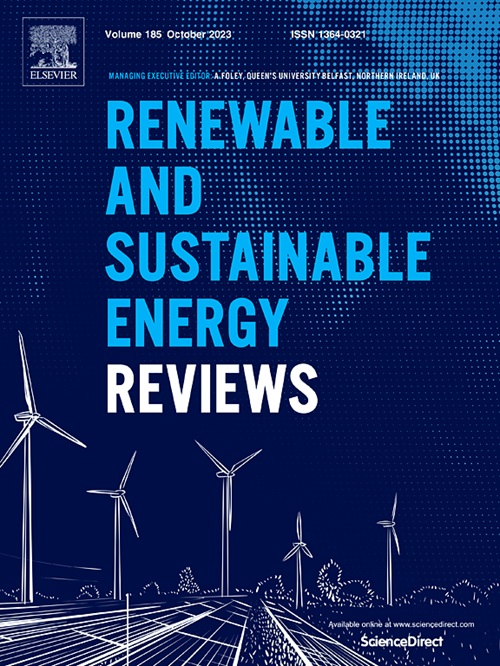制冰技术制备与应用的研究进展与挑战
IF 16.3
1区 工程技术
Q1 ENERGY & FUELS
引用次数: 0
摘要
多年来,造冰技术发展迅速,目前的造冰方法多种多样。本文综述了蒸汽压缩制冷、刮壁、流化床、直接接触、过冷水系统、跨临界CO2和溜冰场等制冰方法,以提高制冰系统的效率和成本效益。在蒸汽压缩系统中,比能耗值将在0.09-0.13 kWh/kg冰的范围内,而先进的可泵送冰系统的比能耗值为0.06 - 0.075 kWh/kg。吸收式制冷系统使用基于氨-水混合物的热驱动循环,从而提高高达25%的能源效率。透明制冰的临界速度通常在0.1毫米/分钟左右,这对于生产具有优越晶体结构的透明冰至关重要。透明冰的质量相对较高,密度为917 kg/m3,是体育和食品应用的主要关注点,冰晶的晶粒尺寸从50 μm到200 μm。然而,制冰对温度、空气湿度和结构特征很敏感,并且挑战仍然存在,例如同时加热和冷却造成的能源消耗。这项研究概述了制冰技术的最新发展和挑战。本文章由计算机程序翻译,如有差异,请以英文原文为准。
Research progress and challenges in the preparation and application of ice-making technology
Ice-making technology has rapidly evolved over the years, with diverse current methods for making ice. This review focuses on ice-making methods such as vapor compression refrigeration, wall scraping, fluidized beds, direct contact, supercooled water systems, transcritical CO2, and ice rinks to improve these systems’ efficiency and cost-effectiveness. In vapor compression systems, specific energy consumption values would fall within the range of about 0.09–0.13 kWh/kg of ice, while advanced pumpable ice systems have demonstrated specific energy consumption values from 0.06 to 0.075 kWh/kg. Absorption refrigeration systems use a heat-driven cycle based on an ammonia-water mixture, resulting in improvements of up to 25 % in energy efficiency. The critical velocity for transparent ice-making, typically around 0.1 mm/min, is crucial for producing clear ice with a superior crystalline structure. Clear ice of relatively high quality with a density of 917 kg/m3 is a prime concern in sports and food applications, with grain sizes of the ice crystal from 50 μm to 200 μm. However, ice-making is sensitive to temperature, air humidity, and structural characteristics, and challenges persist, such as energy consumption due to simultaneous heating and cooling. This study provides an overview of the latest developments and challenges in ice-making technology.
求助全文
通过发布文献求助,成功后即可免费获取论文全文。
去求助
来源期刊

Renewable and Sustainable Energy Reviews
工程技术-能源与燃料
CiteScore
31.20
自引率
5.70%
发文量
1055
审稿时长
62 days
期刊介绍:
The mission of Renewable and Sustainable Energy Reviews is to disseminate the most compelling and pertinent critical insights in renewable and sustainable energy, fostering collaboration among the research community, private sector, and policy and decision makers. The journal aims to exchange challenges, solutions, innovative concepts, and technologies, contributing to sustainable development, the transition to a low-carbon future, and the attainment of emissions targets outlined by the United Nations Framework Convention on Climate Change.
Renewable and Sustainable Energy Reviews publishes a diverse range of content, including review papers, original research, case studies, and analyses of new technologies, all featuring a substantial review component such as critique, comparison, or analysis. Introducing a distinctive paper type, Expert Insights, the journal presents commissioned mini-reviews authored by field leaders, addressing topics of significant interest. Case studies undergo consideration only if they showcase the work's applicability to other regions or contribute valuable insights to the broader field of renewable and sustainable energy. Notably, a bibliographic or literature review lacking critical analysis is deemed unsuitable for publication.
 求助内容:
求助内容: 应助结果提醒方式:
应助结果提醒方式:


